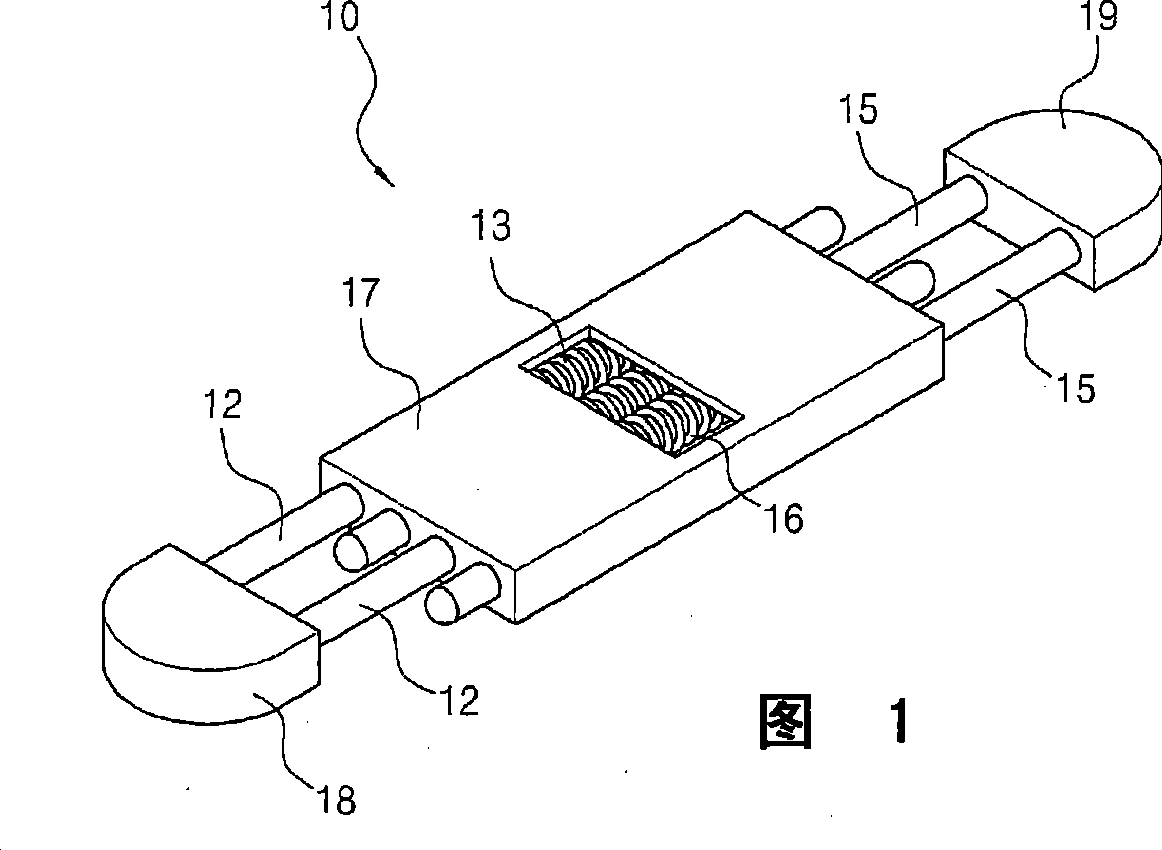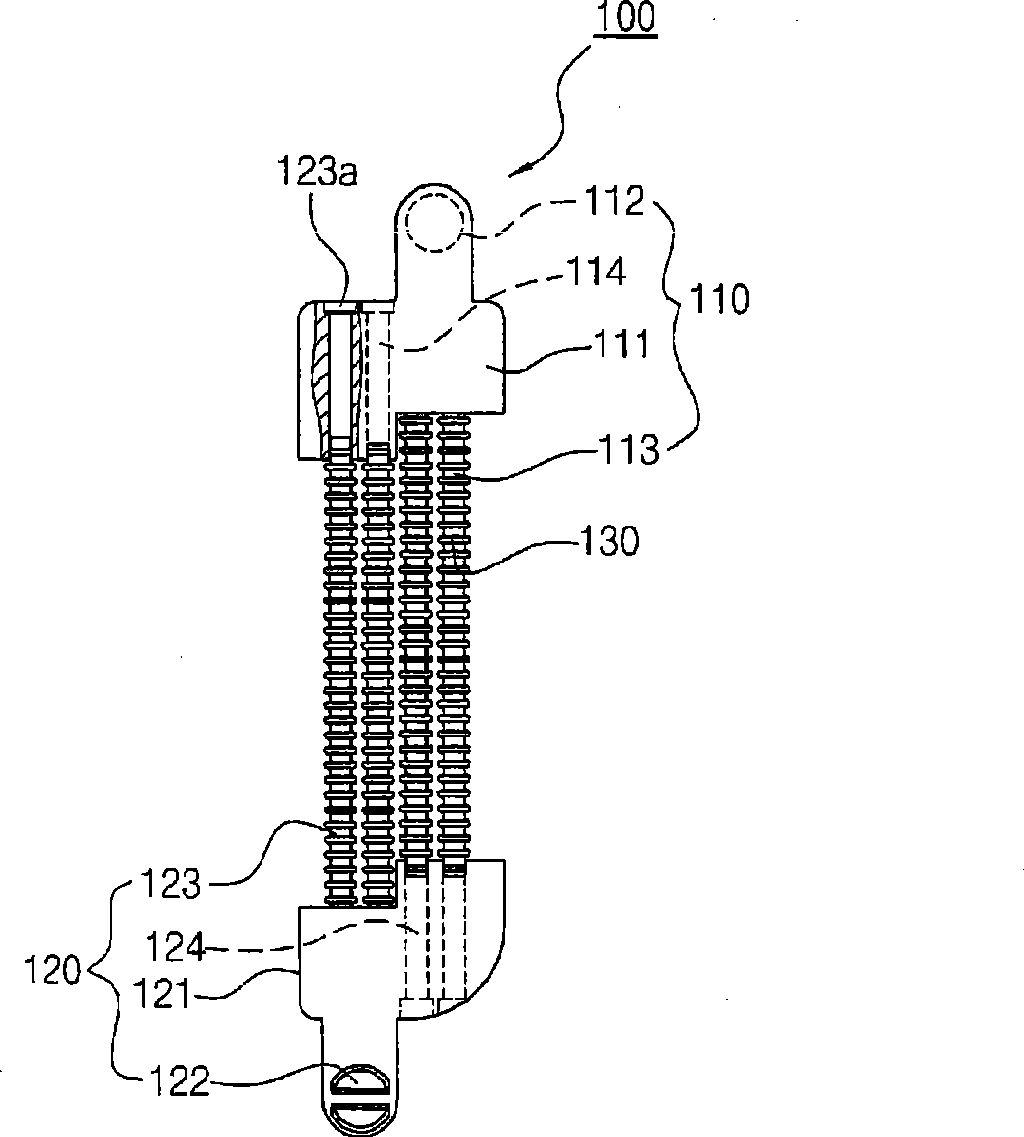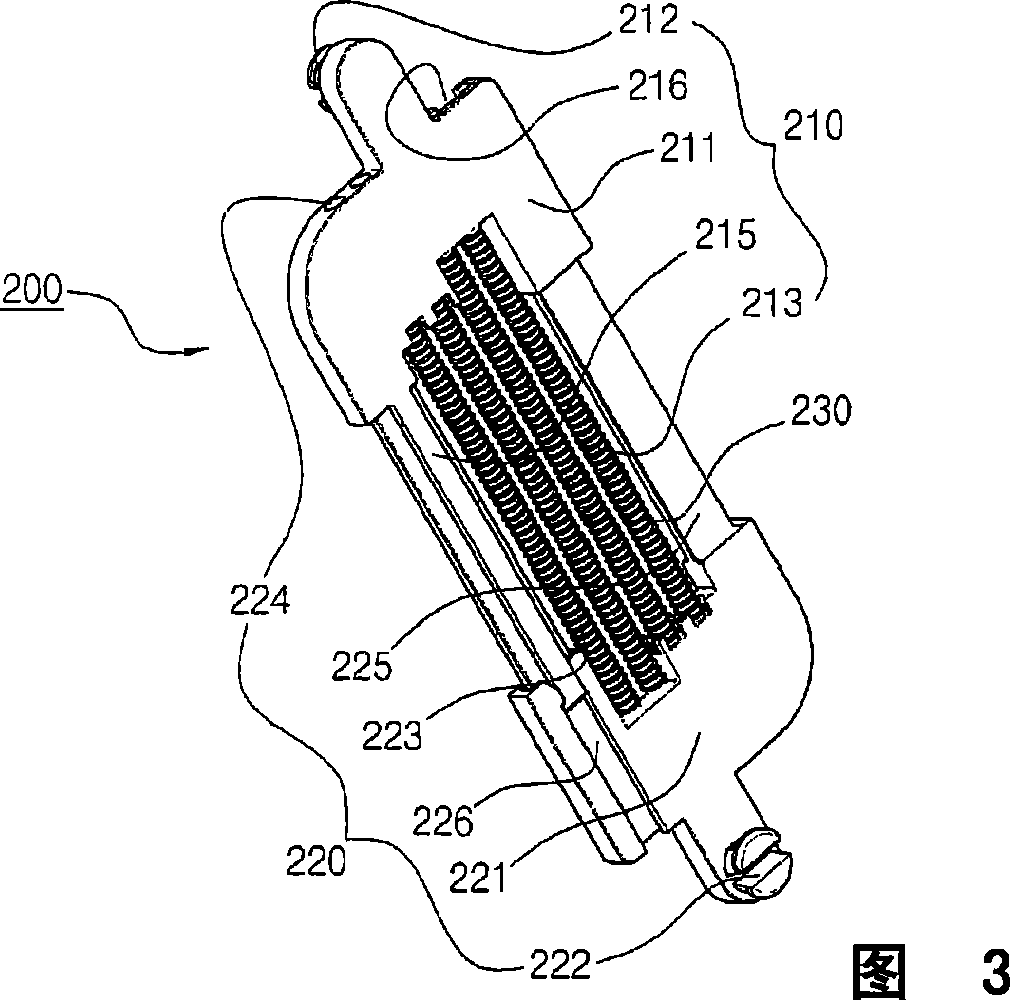Hinge device for cellular phone
A cellular phone and hinged technology, applied in the field of hinged devices, can solve the problems of limited reduction in thickness, limited slimness of portable wireless terminals, and frictional noise generated by shells and springs, etc.
- Summary
- Abstract
- Description
- Claims
- Application Information
AI Technical Summary
Problems solved by technology
Method used
Image
Examples
Embodiment Construction
[0023] Exemplary embodiments of the present invention will now be described in detail with reference to the accompanying drawings.
[0024] figure 2 is a view illustrating the hinge device 100 according to the first embodiment of the present invention. refer to figure 2 , the hinge device 100 for a cellular phone according to the present invention includes a pair of push rods 110 and 120 and a spring 130 .
[0025] The pair of push rods 110 and 120 have the same configuration as each other from the fact that each push rod 110 or 120 includes a body 111 or 121 , a plurality of pins 113 or 123 , and a pin hole 114 or 124 . The difference between push rods 110 and 120 is that either of these push rods is the first push rod 110 having a connection portion 112 to be connected to the main body (not shown) of the cellular telephone, while the other push rod The lever is a second push rod 120 having a connection portion 122 to be connected to a slider (not shown) of the cellular ph...
PUM
 Login to View More
Login to View More Abstract
Description
Claims
Application Information
 Login to View More
Login to View More - R&D
- Intellectual Property
- Life Sciences
- Materials
- Tech Scout
- Unparalleled Data Quality
- Higher Quality Content
- 60% Fewer Hallucinations
Browse by: Latest US Patents, China's latest patents, Technical Efficacy Thesaurus, Application Domain, Technology Topic, Popular Technical Reports.
© 2025 PatSnap. All rights reserved.Legal|Privacy policy|Modern Slavery Act Transparency Statement|Sitemap|About US| Contact US: help@patsnap.com



